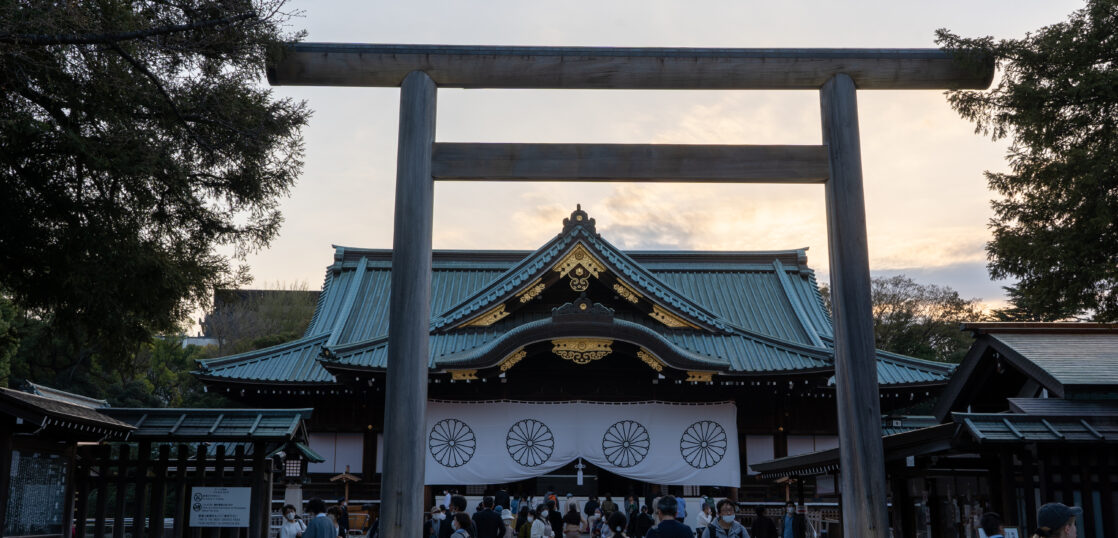Yasukuni Shrine, located in Chiyoda City, Tokyo, is one of the most famous shrines in Japan, founded in 1869 by the order of Emperor Meiji.
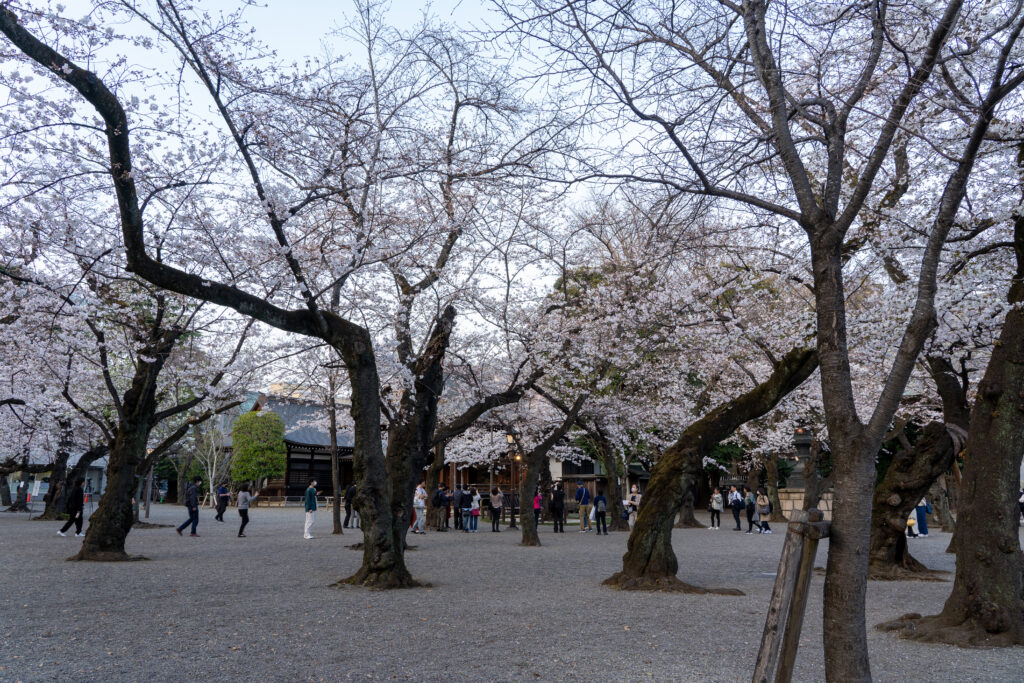
There are about 500 cherry trees in the grounds of Yasukuni Shrine, making it one of the most famous cherry blossom viewing spots in Tokyo.
There is also Chidorigafuchi Moat, which is also famous for cherry blossom viewing spot near Yasukuni Shrine.
A sample tree, which is used as a standard for the annual declaration of the blooming of cherry trees in Tokyo, is located in the precincts of Yasukuni Shrine.
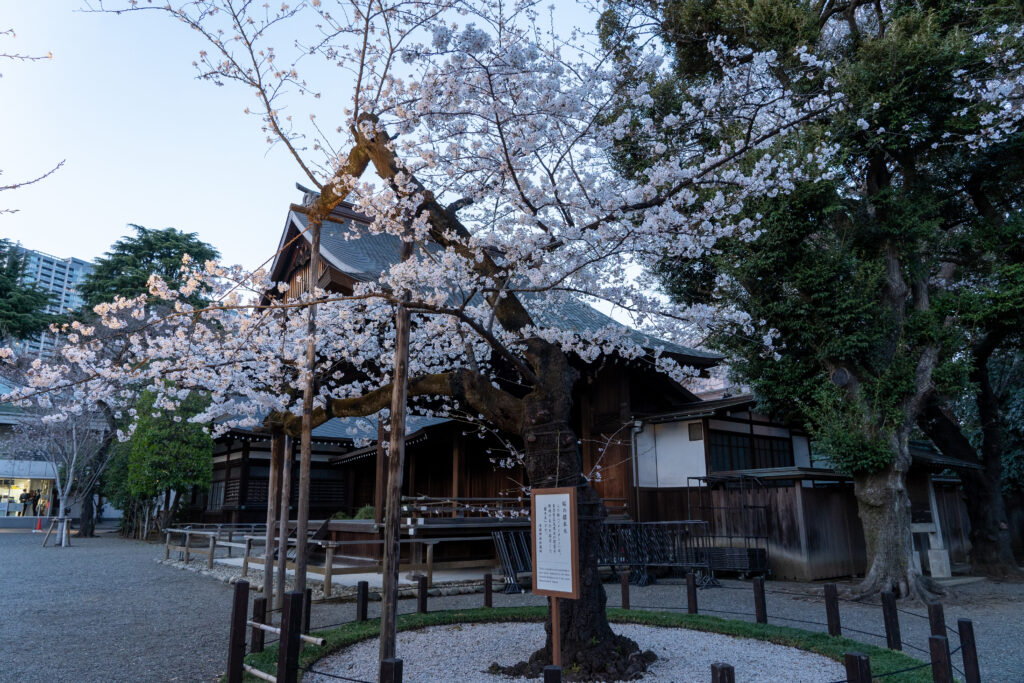
Sample tree at Yasukuni Shrine
The shrine is also known for the “Mitama Festival” held from July 13 to 16, when as many as 30,000 lanterns are displayed, attracting many people as a summer tradition in Tokyo.
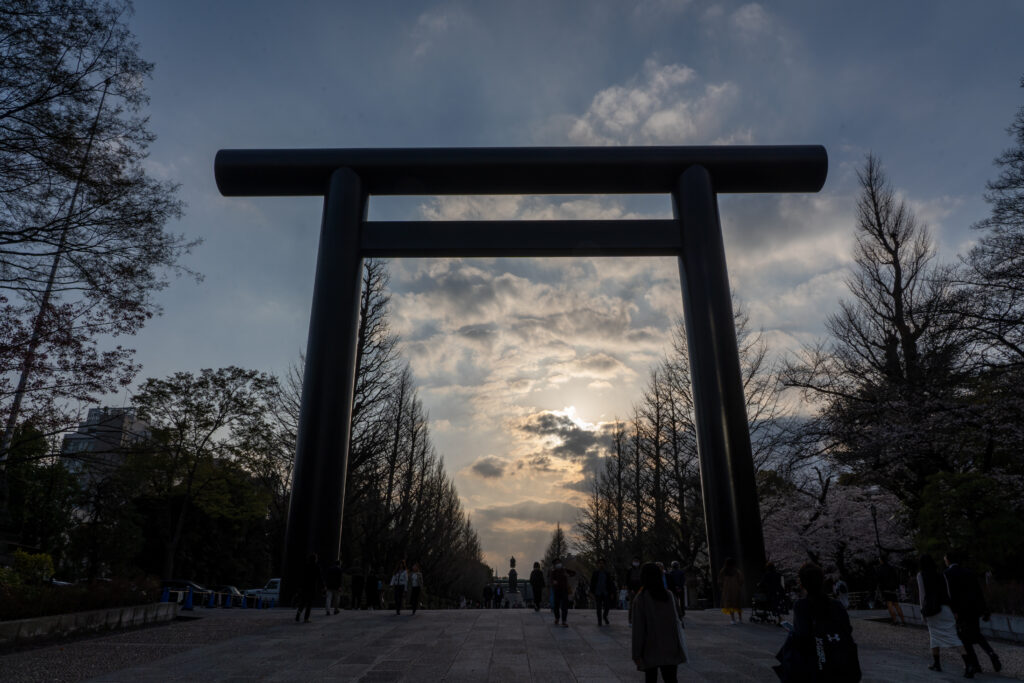
Daiichi Torii Gate is 25meters (82feet) high
At the grounds of the Yasukuni Shrine, there is a large Daiichi Torii Gate(First Shinto Shrine Arch), the Daini Torii Gate(Second Shinto Shrine Arch), which is the largest bronze torii gate in Japan, a Main Hall, a circular garden, and many other attractions.
There is also a museum (for a fee), a gift shop where you can buy souvenirs with cherry blossom motifs, and two cafes.
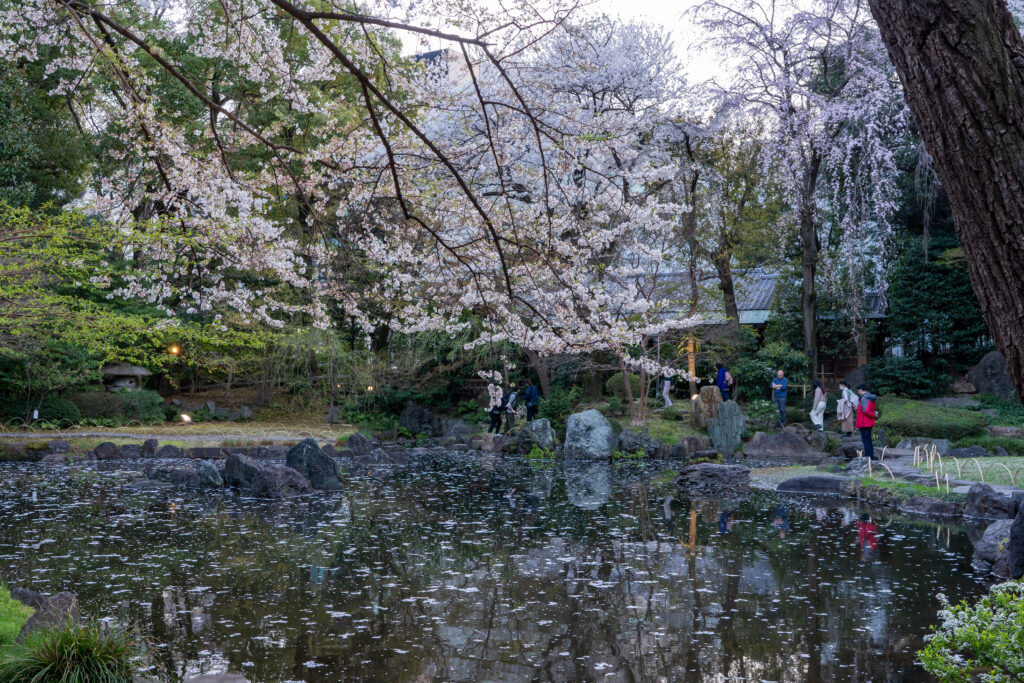
Sacred Pond Garden (circular garden)
Origins and Philosophy of Yasukuni Shrine
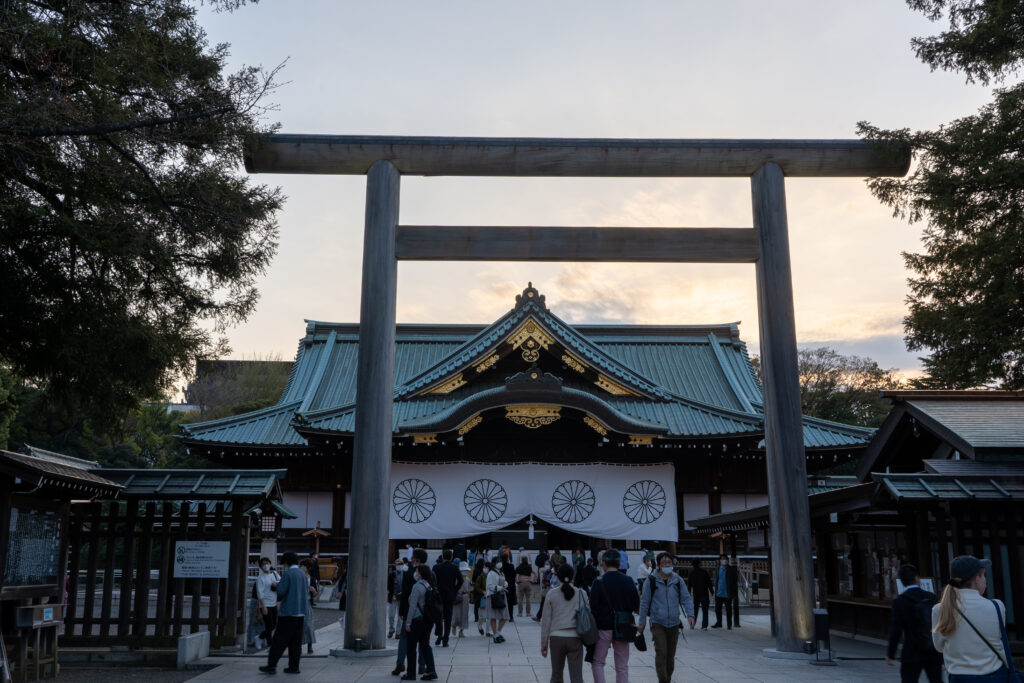
Main Hall of Yasukuni Shrine
The origin of Yasukuni Shrine can be found in “Shokonsha”, which was built in 1869.
Japan was in the midst of the Meiji Restoration when the Boshin War, the largest civil war in modern history, broke out and many lives were lost.
Therefore, by order of the Emperor Meiji, “Shokonsha” was built to commemorate the spirits of those who died in the service of the country and to pass down their achievements to future generations.
Later, in 1879, the name was changed to “Yasukuni Shrine” by Emperor Meiji. The name “Yasukuni” is associated with the wish to “Preserve peace for the entire nation”.
With this background, the souls of 2.5 million people who sacrificed their lives for the country during the Boshin War and subsequent wars are enshrined as the deities of Yasukuni Shrine, without distinction as to rank, merit, or gender.
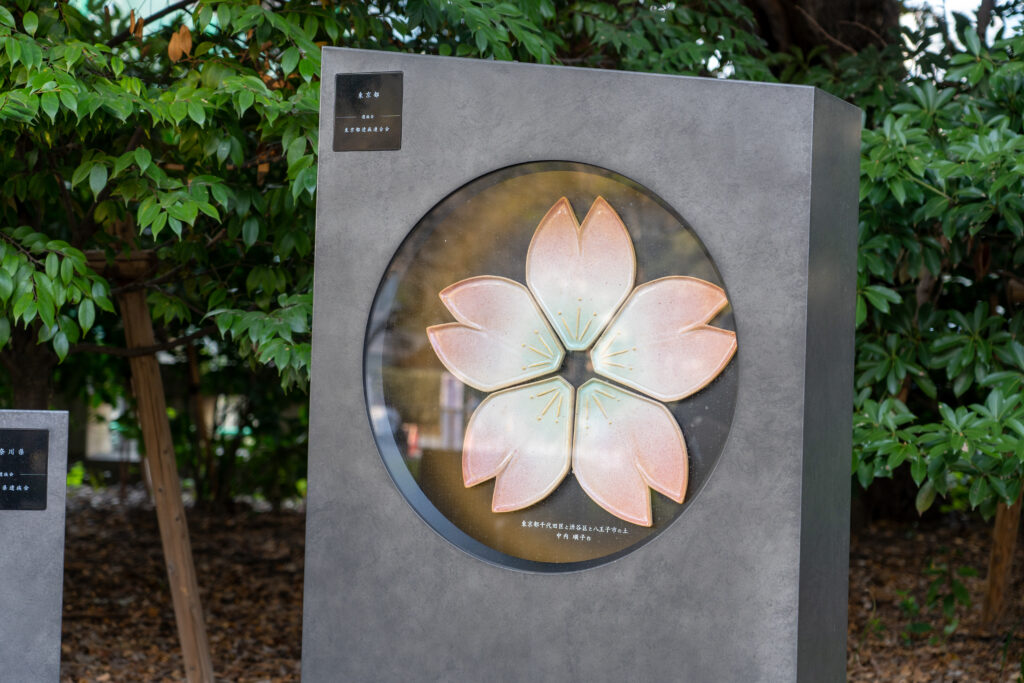
There are 47(the number of prefectures in Japan) Cherry-Blossom Ceramic Tiles in the Outer Garden
INFORMATION
NAME
Yasukuni Shrine (靖国神社)
BUSINESS DAY
Every Day
ADMISSION
Free
ADDRESS
3 Chome-1-1 Kudankita, Chiyoda City, Tokyo 102-8246
ACCESS
5 minute walk from Kudanshita Station.
11 minute walk from Ichigaya Station.
14 minute walk from Iidabashi Station.
STATION INFO
(Tokyo Metro) Kudanshita Station
Hanzomon Line, Tozai Line
(Toei Transportation) Kudanshita Station
Shinjuku Line
(JR) Ichigaya Station
Chuo-Sobu Line
(Tokyo Metro) Ichigaya Station
Yurakucho Line, Namboku Line
(JR) Iidabashi Station
Chuo-Sobu Line
(Tokyo Metro) Iidabashi Station
Yurakucho Line, Tozai Line, Namboku Line
LINK

